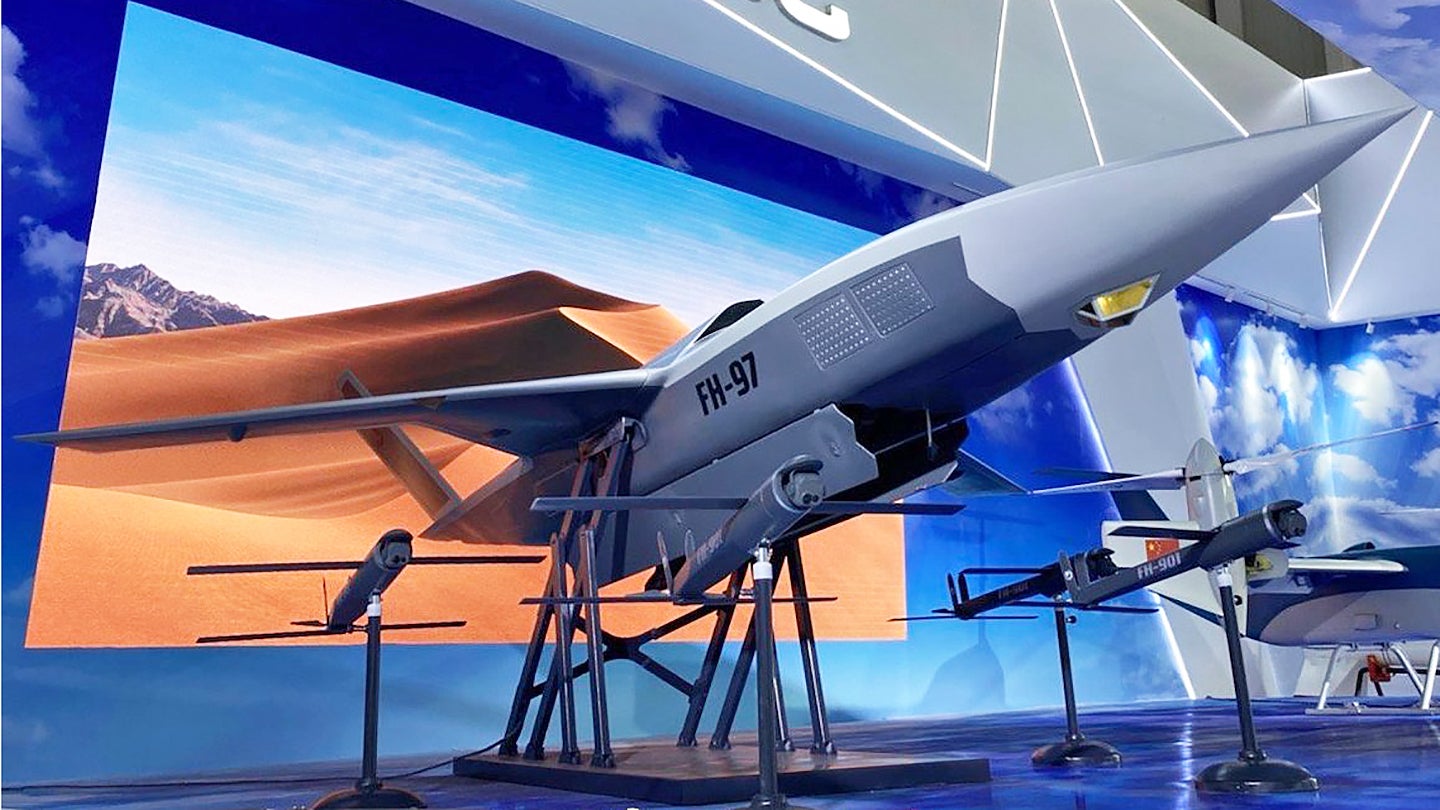China’s new indigenously developed electronic warfare and armed reconnaissance drone completed a performance test at an undisclosed test facility in July, per a report by China’s state-owned Global Times.
The latest drone belongs to the Fei Hong (FH) series of Unmanned Aerial Vehicles (UAV), known as the FH-95 UAV system, that can be used for all-weather, all-day reconnaissance and surveillance.
Not much is known about the operational characteristics of this drone, except that it is a medium-and-long range multi-purpose platform with a one-ton take-off weight and an endurance of more than 24 hours. It can carry more than 250 kilograms of various mission payloads.
The drone can also be paired with a satellite communication system for long-range combat missions in complex battlefield environments.
FH-95 Electronic Warfare Drone
According to the Janes, the UAV has four weapon hardpoints, and among the weapons, it can carry includes the 44-kilogram FT-8C laser-guided missile. Also, it could very likely have the ability to fire anti-radiation missiles.
No F-16s For Ukraine But US Is Readying Its ‘Tank Buster’ Fighters Precisely Developed To Hunt Russian MBTs
10 Breakthroughs! Chinese Media Outlines ‘Key Feats’ That PLA Forces Achieved To Merge Taiwan With China
Developed by the Aerospace Times Feihong Technology Co (ATFTC), a state-owned China Aerospace Science and Technology Corp subsidiary, the drone was showcased at last year’s Zhuhai Air Show in South China’s Guangdong Province.

The most important feature of the FH-95 is its electronic warfare (EW) capability, according to Chen Jianguo, ATFTC general manager and researcher, who told Global Times during the last year’s Zhuhai Air Show that “electronic warfare, reconnaissance, and early warning drones are becoming essential tools for future war as they can conduct remote detection outside the defense area or tactical feint and saturated attack in coordination with manned aircraft.”
?? company CAST introduced a new reconnaissance and strike UAV FH-95, undergoing the final stage of testing
Maximum takeoff weight 1000 kg Maximum ceiling is 8 km
Flight duration is 24 hours pic.twitter.com/vlVvXzG6BN— Húrin (@intel1osint100) July 26, 2022
The FH-95 drone completed its first test flight in 2017, was delivered to a major client in 2019, and received its first export contract in 2021, according to a Beijing-based magazine, ‘Unmanned Vehicles’ cited by Global Times.
Also, a new variant of the FH-95 is reportedly being flight-tested in a facility in Northwest China.
FH-97 High-Speed Stealth Drone
In addition to the FH-95, there was another drone showcased during the 2021 Zhuhai Air Show, called the FH-97, which is a medium-range high-speed stealth UAV that is said to be a clone of the XQ-58A Valkyrie being developed by the American manufacturer Kratos for the US Air Force (USAF) as part of the Loyal Wingman concept.

Like the Valkyrie, the Chinese-made FH-97 has a stealthy trapezoidal fuselage, sharply swept main wings, a V-shaped tail, and an air intake above the fuselage.
The FH-97 is designed to carry out rapid long-distance reconnaissance, surveillance, and strike missions targeting critical enemy locations and facilities.

“UAVs will be put into a complex battlefield environment in a future war. In the face of enhanced missile systems that contain airborne early warning aircraft, stealth fighter jets, and electronic warfare aircraft, high-speed drones can largely increase battlefield survivability and penetration capability,” Chen told the Global Times.
Furthermore, the FH-97 can carry the FH-901 loitering munition to conduct rapid and precise attacks on enemy maneuvering and sensitive targets.
Reports suggest the FH-901 is also influenced by the US-made Switchblade drones used by the Ukrainian armed forces for pinpoint strikes against Russian military personnel in the ongoing Russia-Ukraine war.
Use Of FH-95 Drones In Potential Wars
It is essential to mention the FH-97 and the FH-95 because, according to Global Times, these two drones could complement each other in live combat situations, such as the FH-95 could provide electromagnetic interference ahead of the suppression of enemy air defense (SEAD) strikes by the FH-97.
Or it could be another way around, meaning the FH-97 can be used as decoys to bait the enemy air defenses into revealing their positions, following which the FH-95 can go in and take out the air defense radars using its anti-radiation missiles, thereby making it safer for manned fighter jets to operate.
Also, reports suggest that the FH-95 could also be employed as an early warning platform, considering the advances in radar warning receiver (RWR) components which are becoming smaller and can be outfitted on lighter platforms.
Furthermore, defense analyst Michael Peck suggests that a large number of small electronic warfare drones could conduct swarm attacks to saturate an area and disrupt radio, radar, and cellular communications, noting that the US military could be particularly vulnerable to such swarm attacks, considering its doctrine of “highly integrated operations tightly connected by data networks.”
According to Peck, the US’ Joint All-Domain Command and Control (JADC2) project that relies on sensor-to-shooter links between drones and long-range missiles could be disrupted if China manages to jam those links during wartime.
- Contact the author at tanmaykadam700@gmail.com
- Follow EurAsian Times on Google News




